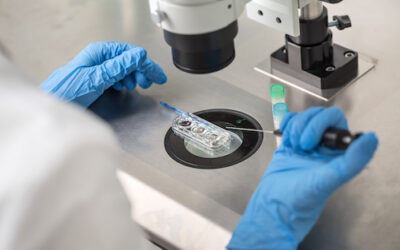Infertility Medications
Clomid
Learn More
Femara (Letrozole)
Learn More

Gonadotropins
Learn More
These injections must be used under the supervision of a doctor to prevent harmful side effects such as ovarian hyperstimulation (OHSS). The clinic provides detailed mixing and administration instructions.

Lupron
Lupron (leuprolide acetate) is an injectable medication administered daily just below the skin (subcutaneously or SQ) in the cycle before the controlled ovulation stimulation (COS) cycle and throughout the COS cycle. Lupron initially causes the release of LH from the pituitary gland in the brain. The LH is essentially emptied from the pituitary gland so that during the COS cycle, the higher levels of estrogen from the multiple growing follicles will not cause an LH surge and premature ovulation.
Learn More

GnRH Antagonists

Human Chorionic Gonadotropin
Learn More

Progesterone
Learn More
Metformin – Glucophage
Learn More
Supplements
Learn More
Recent Articles
Choosing the Right Fertility Clinic: Questions to Ask Before You Decide
[dsm_blob_image blob_image="https://www.adorefertility.com/wp-content/uploads/2023/05/350377175_242668685060614_490906324096506677_n.jpeg" alt="fertility clinic" title_text="What-To-Do-While-You-Wait" blob_shapes="image_thirdteen" blob_position="bottom"...
Types of Fertility treatment options
[dsm_blob_image blob_image="https://www.adorefertility.com/wp-content/uploads/2024/02/shutterstock_1706420011.jpg" alt="Fertility issues" blob_shapes="image_thirdteen" image_height="350px" _builder_version="4.24.2" _module_preset="default"...
Fertility Struggles: Understanding the Emotional Impact
[dsm_blob_image blob_image="https://www.adorefertility.com/wp-content/uploads/2024/02/shutterstock_1706420011.jpg" alt="Fertility issues" blob_shapes="image_thirdteen" image_height="350px" _builder_version="4.24.2" _module_preset="default"...
Fertility in Your 30s and 40s: What to Expect and How to Plan
[dsm_blob_image blob_image="https://www.adorefertility.com/wp-content/uploads/2024/01/shutterstock_535071976.jpg" alt="Fertility Clinic" blob_shapes="image_thirdteen" image_height="350px" _builder_version="4.24.0" _module_preset="default"...




